How to core kousa
Jul 26, 2011, Updated Mar 06, 2024
This post may contain affiliate links. Please read our disclosure policy.
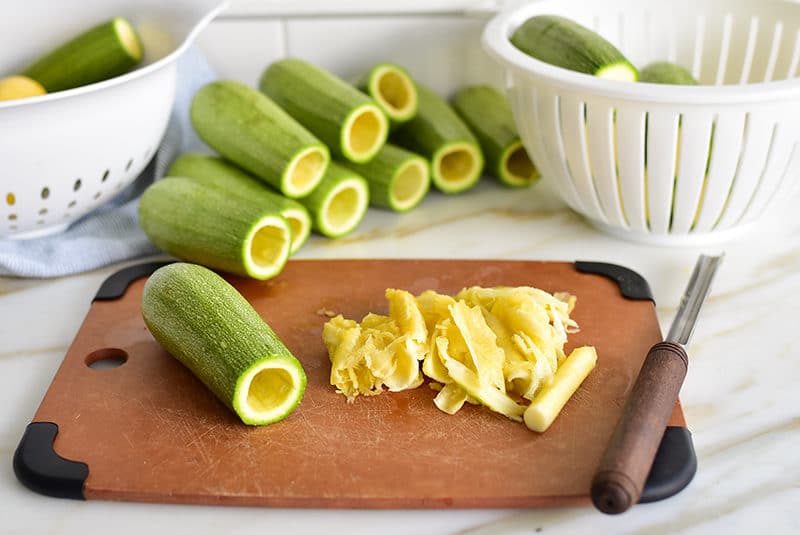
Learn how to core kousa to make stuffed squash, or coosa mehshee (MEH-she). A special tool is used for this, or you can use a zucchini corer.
How to core kousa, step by step
Step 1: Trim the stem and top
Slice a thin layer of the bottom browned tip of each squash.
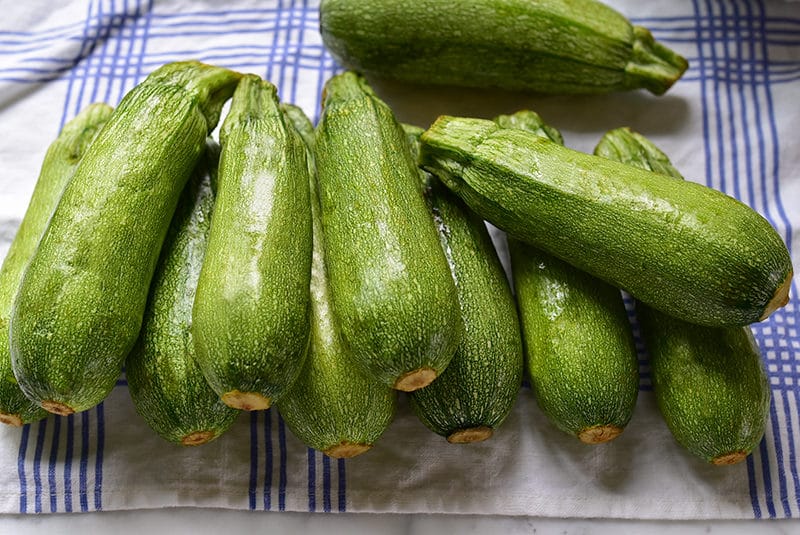
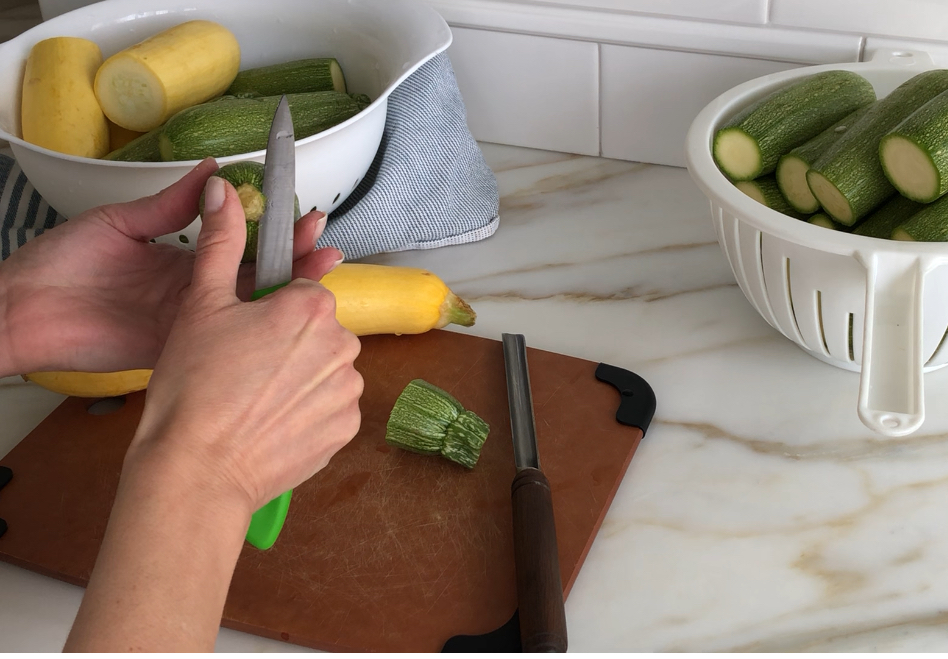
Then, cut the stem end of the squash off (the stem end that was connected to the plant). If your squash is bent at the neck, cut below the bend. You can save any edible portion of the bent pieces; slice them up and sauté them.
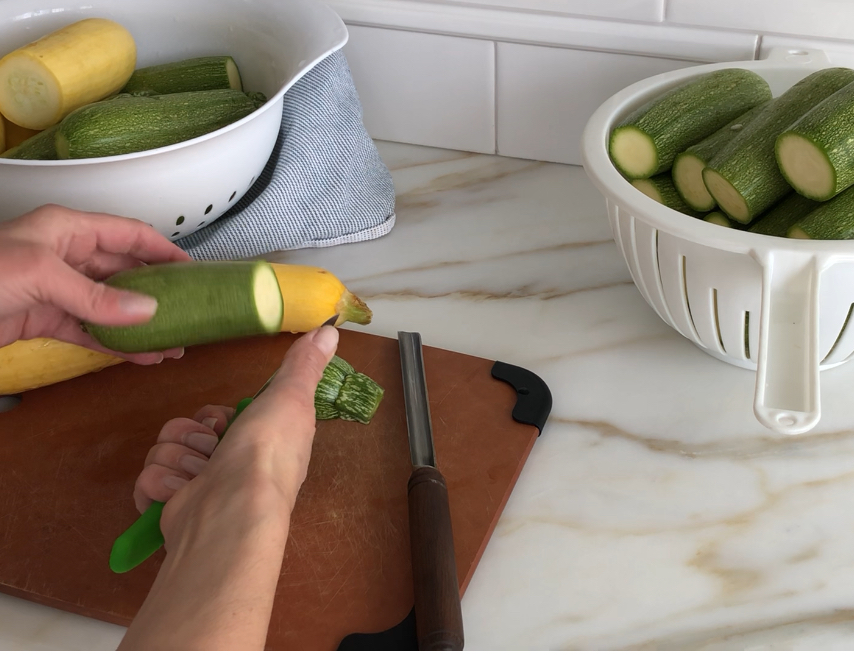
Step 2: Hollow out the squash
Hollowing the squash is entertaining and easier than it seems, but you have to be careful not to get carried away with how good you are at hollowing it out and puncture through the squash. Take it easy, leaving a ¼ inch rim of squash. Core deep enough into the squash to end up with a decent balance of stuffing to squash.
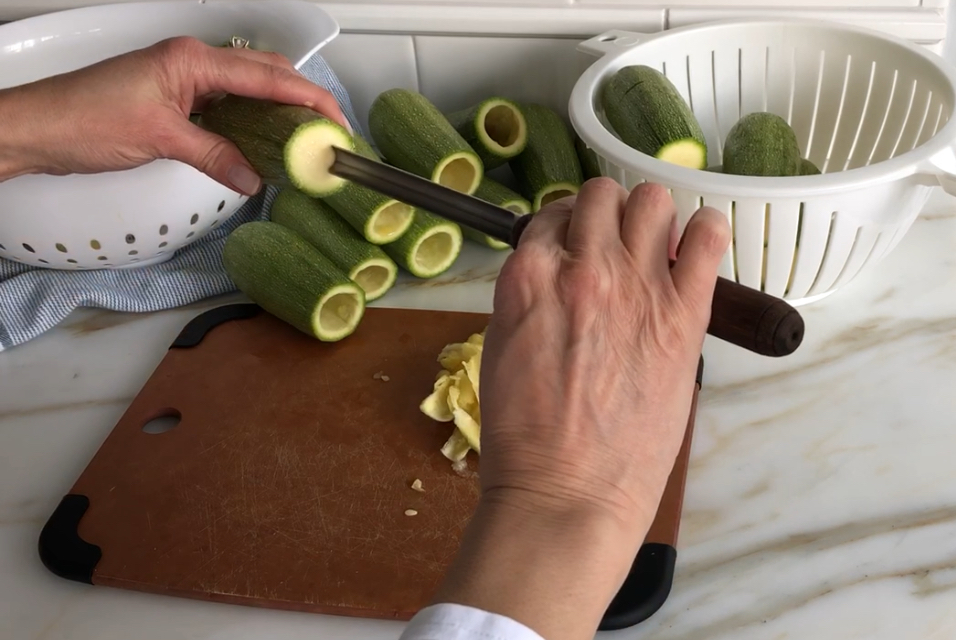
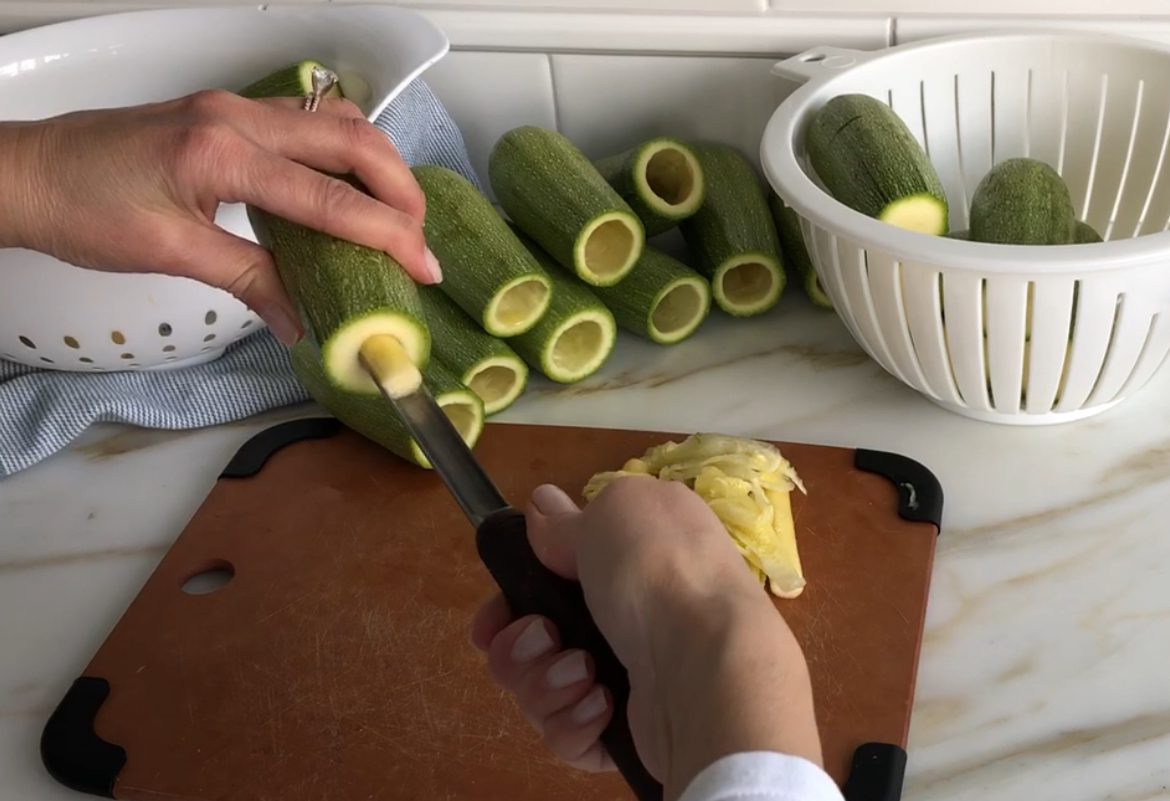
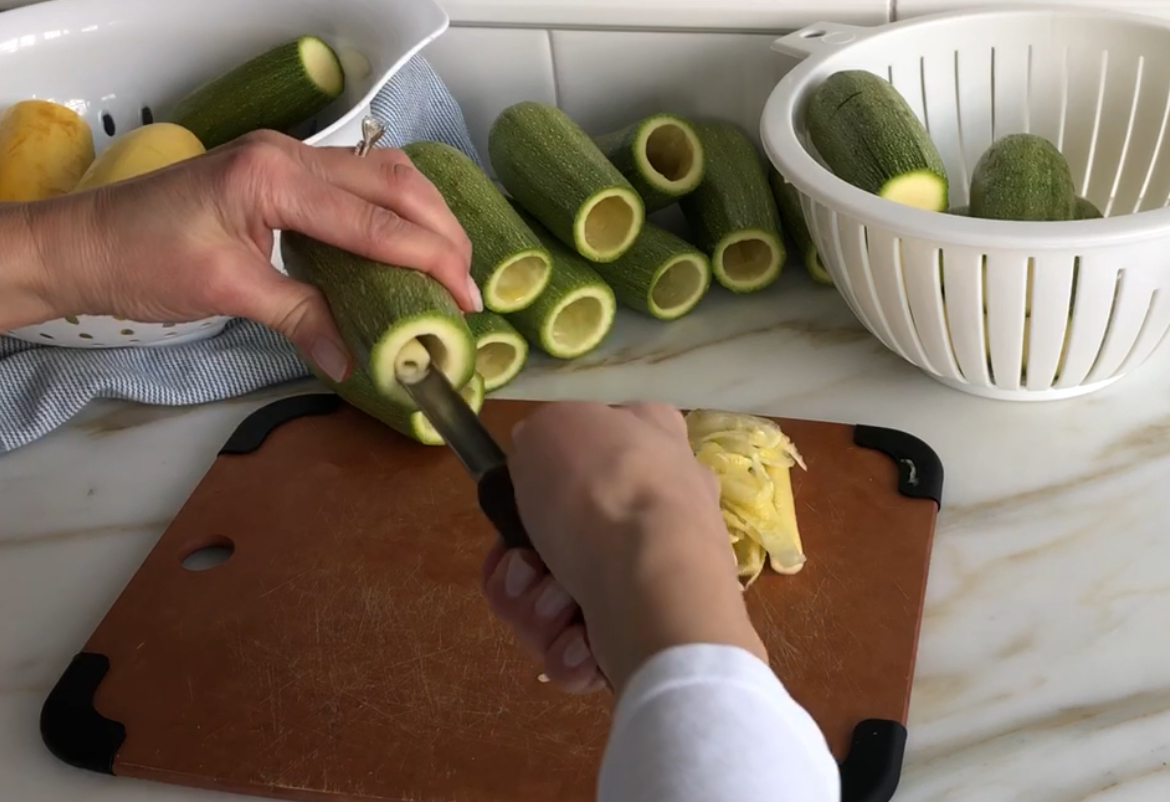
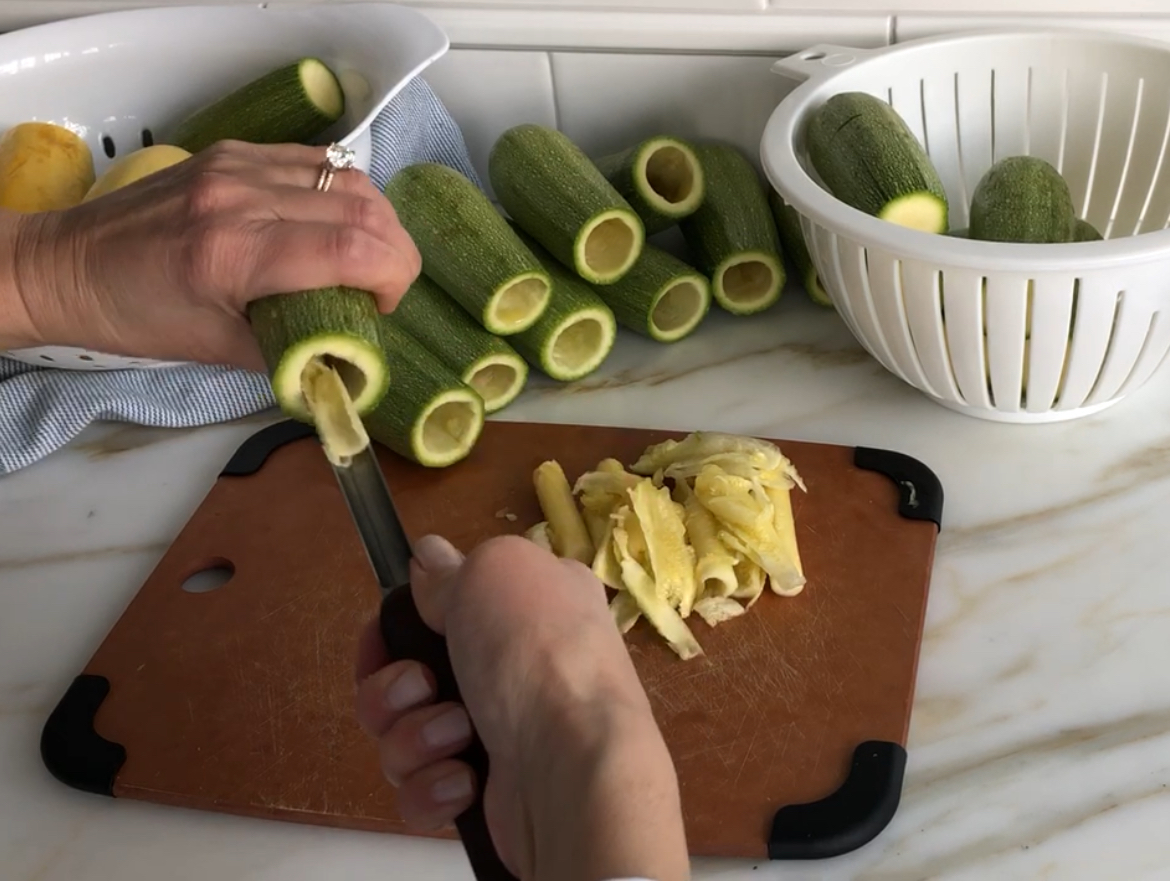
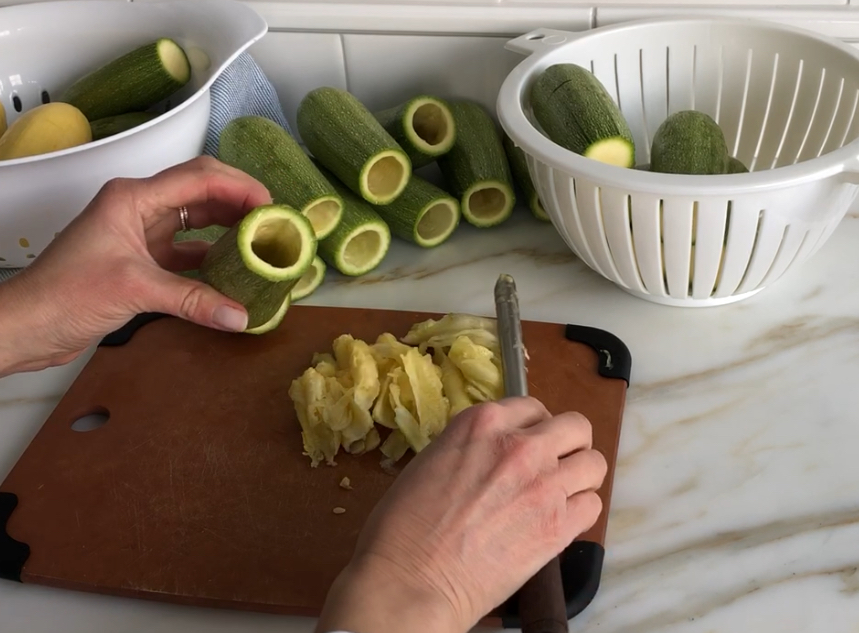
Insert the corer in ¾ of the length of the squash and twist. Pull out the core. Do this a few times, scraping against the edge of the squash with gentle pressure to hollow it out. If you do puncture a squash, don’t throw it away in a huff. It’s still useable. Just serve that one, the ugly duckling, to yourself and no one will know.
The squash cores are sometimes added into the pot with the coosa when it cooks, and there are other tasty ways to use them up. I don’t add the cores into this dish but if you try it and like it, you get points for wasting not.
Kousa Recipes
Lebanese Stuffed Kousa Squash is the traditional beef or lamb and rice filled dish.
Make it vegetarian with ease and delicious results with my Vegetarian Stuffed Koosa recipe.
Make it a Lebanese Koosa Soup with Meatballs and skip the coring and stuffing altogether!
Save those cores and make a quick Koosa Core Saute
Read a story! Are you a koosa?
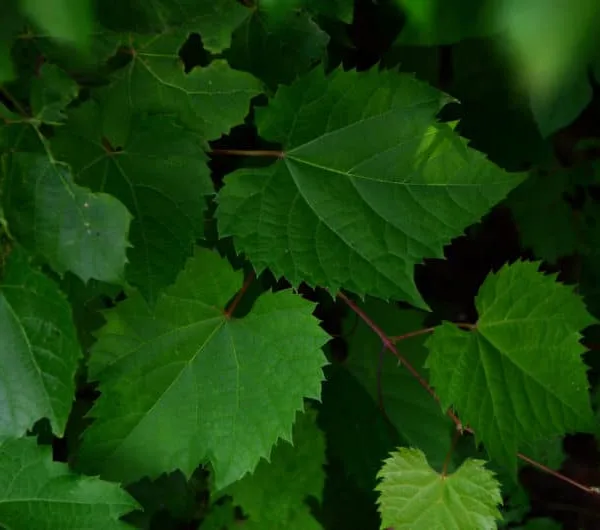
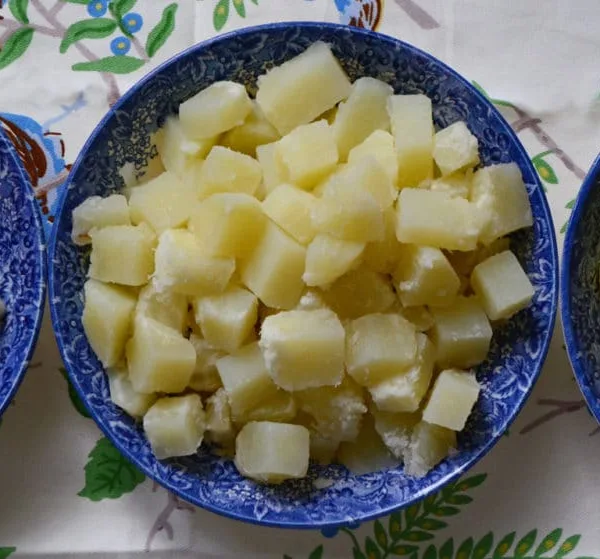
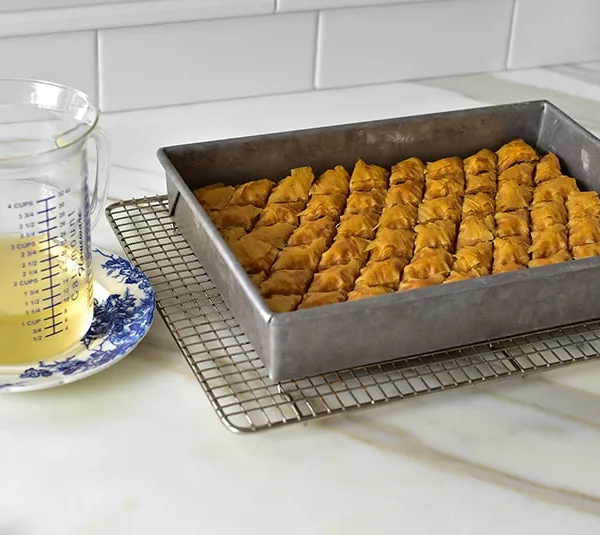
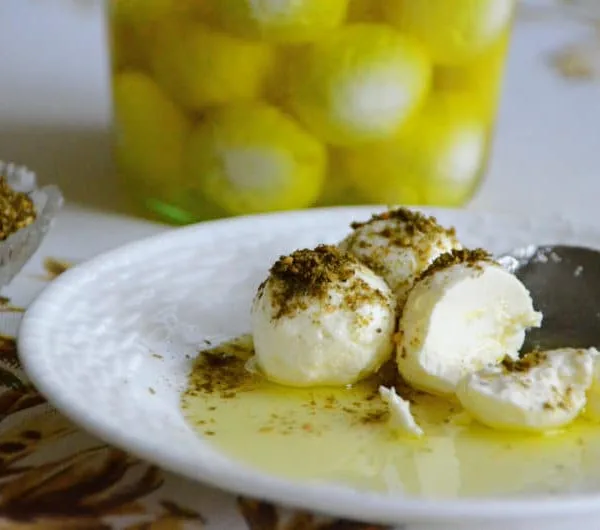







The easy way to core coosa I use a variable speed power drill with a flat shank drill bit, used for boring holes in wood. I know sounds extreme but once you get the hang of it,
you will never core any other way.
OH MY GOSH!!!!!!
When you freeze cored Koosa and take them out to stuff do you thaw first?
You can stuff them without thawing! They get very soft when thawed so it is best to stuff them frozen or freeze them already stuffed with meat and rice.
Hello Maureen
Thank You so much for your wonderful website! I really appreciate your wonderful recipes and family stories. Am purchasing your cookbook, as there are so many more things I hope to try.
My husband is from Israel, and now that we are in the USA he greatly misses his Mom’s and his Sitti’s cooking! We enjoy it immensely whenever we return! Here in South Carolina, it is difficult to find excellent Labna, and it is quite expensive. Labna is a “staple food” at our home, so I decided to try making it myself. After finding your website, I used your recipe and it turned out beautifully~I am definitely hooked! Making my own yogurt and Labna is a ritual I look forward to every week. Hubby says my homemade Labna is tastier than home..quite a testament to your recipe 🙂 After experimenting, I have discovered that 1 pint Heavy Cream added to the 1/2 Gallon of Whole Milk makes an amazingly delicious, rich and creamy Labna. Your suggestion of using Organic Whole Milk is one I have taken to heart, and the results speak for themselves. My next goal is to master making Chubzi:-) Thank You very much for your website, and for making your wonderful recipes and stories available to all of us.
Thank you so much for all of this Lori! I just made a batch that included heavy cream and a bit of half and half that I had on hand, along with the milk. So incredible! Thick and rich and flavorful. Go for the bread! You are so ready! Keep me posted…
Can I freeze the stuffed coosa
Hi Ann–people do it, and I have done it, but know that the texture of the cooked koosa after it has been frozen is a bit mushy.
Hi Maureen,
What is the length of the blade of your coosa corer? Thank you.
Hi Lexi–the blade is 5 inches. The walnut handle is also 5 inches. I love the corers for their weight, balance, and ability to cut so easily and swiftly into the koosa. Thank you for asking about this!
Hi Maureen, first let me say I love your website. So many recipes are the same as ours! My mother-in-law also froze the cusa from her garden. I am now using my instant pot for making cusa (it’s wonderful to have them done in 20 minutes). My question is: When you remove frozen cusa from the freezer, do you stuff them frozen or thaw them out first?
Hi Cathy–thanks so much! I stuff the cusa when it’s frozen, otherwise when they thaw they are quite soft and not so easy to stuff.
I married my Lebanese husband 55 years ago and didn’t get much advice on cooking. So just had to figure out by myself. I have always used a “church key” which is a tool with a triangle on one end to open beer cans and rounded on the other end to open bottle tops. The round side scrapes the sides and bottom of the koosa.
You are clever Marian! And your husband, blessed!
I am 1/2 Lebanese and my dear aunts taught me how to make kousa before they passed. I always had a problem freezing them as they came out limp. Your suggestions sound very helpful, I will try that. I would love to have them in the winter.
Hi, Teta makes them so that she cuts the very tip of the kousa with a sharp knife, then cut out a cone before removing the inside, so this way she gets a cup for every piece which she just pushes a bit deeper in the top back after she filled the kousas. this way she can place them horizontal in the pan and she does that the tops are in the center, and like a star, goes around… I hope it doesn’t sound too complicated, I couldn’t explain it better =)
and I love your recipes and the way you write about food xx
The koosa corer in Arabic is called minaret el koosa Mike.
Maureen – I know what my family called the corer but for the life of me I can’t spell it.
MIKE , I have been sitting here trying to figure out the name of the coussa corer I always remembered the name for the life of me. I cannot think of it now SITHO always said the name but she’s been dead for many years now if you ever think of the name MIKE , please tell me it’s driving me crazy I did COUSA yesterday and I said the name now I can’t think of it must be my age getting older thanks again I hope you can remember because I can’t Sam
Hi Maureen,
Your site excited me! I am ½ Lebanese and ½ Italian. My Sito taught my Mom (Italian) to cook all kinds of dishes. (My Mom was open to all nationality cooking and her and Sito taught me a lot).
This a.m. my daughter-in-law and I cored koosa and froze it for the winter. I have frozen it blanched and un-blanched. I did some research on line and it recommended blanching. Boiling water 2 mins. followed by a cold bath, drain, bag and freeze.
I also make an omelets with the insides. Also, if there is leftover stuffing from the coosa, I mix it with the leftover insides and make kind of a stew. I don’t know what it is called, but we love it.
Love to hear from other “Lebanese Cousins.”
Hi, I love to make these for my family. But, I just grew a whole bunch and can’t use it all right away. Can I freeze the koosa after I core it out?
Yes, exactly what I do!
Whenever we make stuffed coosa, we make what I know as ejjy with the insides of the coosa. I am sure you would love this version. Salt the scrapings and collect into a colander, and put an inverted plate on top with a weight to squeeze out excess moisture. Leave for about an hour…there will be a lot of water. Chop up the pulp and place in a bowl. Add chopped scallions, parsley, and mint. Proportions are determined, of course, by the amount of pulp with which you started. Trust yourself to know when it looks right. Beat a couple of eggs and add some ground pepper. Then sift a couple of tablespoons flour into eggs and whisk in. Combine the egg mixture with the herbed pulp. Heat some oil in a large skillet and drop the batter by spoonful into hot oil. It should spread by itself, or you can gently flatten with your spoon. Flip when cooked on the first side, and finish cooking. Place on paper towels or brown paper to absorb any excess oil. This is delicious hot or even at room temperature, and absolutely the best with a slice of native summer tomato in Syrian bread! One of favorites for lunch in summer. Enjoy!
Your variation of ejjy sounds absolutely delicious, Merry, thank you! I can’t wait to try it.
Let me know how it comes out. I am the only one in my generation who makes Syrian/Lebanese food, so it’s nice to be able to share recipes with someone.
Can some one tell me how to freeze the cored Koosa. I remember my mother freezing some when I was young.. But don’t know if she partially cooked the unstuffed Koosa or just dried them and froze them as they were.
Hi Barbara–just core and freeze them, then stuff and cook them when you are ready!
I love the “ijjy”. We always make it after the coosa and such a treat. However, we are trying to cut down on deep frying and there’s a recipe to do it in the oven (like a pie). It’s not quite as good but still delicious. I can’t find my baking instruction. Anyone have it?
Elayn, I am including the ijjy in my upcoming cookbook! I love how your idea do it in the oven–I will try it. I imagine you could bake it the same as a frittata.
Hi! Can i core the squash a day ahead of time?
Yes, you sure can–it keeps well refrigerated or frozen.
Hi i was just curious about the koosa corer …i cant seem to find one but would love to make this!!!!any suggestions
Hi! Thrilled you want to make coosa! Try Middle Eastern grocery stores or delis. Kitchen shops sell something called a “zucchini corer” that is very similar and will work well. Let me know how your coosa comes out! It’ll be delicious.
I love making this, just like my aunts used to. However, I always try to find much larger squash like the ones we had in upstate NY. Do you find a big difference or have a preference between the large vs. small?
Rick, I look for the pale green coosa that isn’t always available. In Chicago at the farmer’s market they had it and called it Korean squash. They are about the length of your hand and about 2.5 inches wide. I like that size because they look nice on the plate, but I think I would like them smaller too!
Didn’t you call the corer
a goofer? Still using Grandma Shaker’s goofer!
I just bought a corer on Amazon – cannot wait to try these!
That is great Beth!!
Wow who knew someone other than my Dad made those! Thanks Maureen, the link really helps.
Love the blog!
Thanks Anne…I bet your dad’s were delicious!